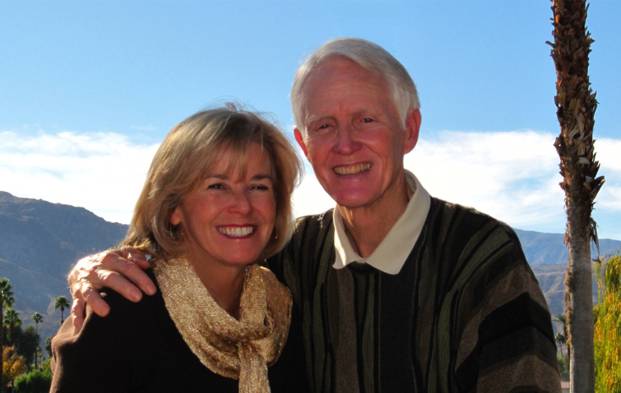
Ch-1: Our Search for Happiness and Self-Actualization
Part 7: Make A Self-Development Plan
Tom G. Stevens PhDPsychologist/Professor Emeritus, California State University, Long Beach
Send Feedback/Questions to: Tom.Stevens@csulb.edu
You Can Choose To Be Happy:
Site dedicated to enhancing human happiness, self-development, and success
Go to: Choose To Be Happy Checklist
SITE MAP: All free Self-help resources includes online book, You Can Choose To Be Happy, and SHAQ

|
|||
| search engine by freefind |
Go to site Homepage
Go to book contents Go to chapter contents
The "Choose to be Happy" self-development plan
CHOOSE TO LEARN AND BE HAPPY WHILE READING THIS BOOK
When you are reading--even something that you enjoy--do you sometimes
"bog down" in the material? Do some parts seem too confusing or too boring?
In later chapters I discuss the concept of harmonious functioning. These
chapters are about how to get "in the zone" of optimal interest and learning.
If you feel confused. You are only learning at a good rate if you are feeling interested. If you are feeling confused, then the input may be too overwhelming for your ability to process it. Your current thinking method cannot organize the input material well enough. Many people keep reading when they are confused and only compound their confusion. Others think that they are stupid when they feel confused. Some get angry and "turn off" out of frustration--blaming their confusion on the book.
Confusion is a healthy part of everyone's natural learning and growth process. Our confusion can be like a door. Opening the door and looking at what our confusion is about will create learning. Letting the door remain closed and continuing to read in a confused state (or giving up) will just increase our confusion and lower our opinion of ourselves.
Instead, if you feel confused, immediately stop reading. Ask yourself questions. What you are confused about? Try to answer the questions. Break your confusion into parts. Relate examples in your own life to ideas in the book--a light may switch on.
If you feel bored. Boredom is the result of too little input and stimulation. We are bored if we are not learning anything new or useful. In that case skim or find creative uses. However, boredom is often a result of confusion. If we "give up" or "turn off" because we don't understand something, we may cut our thinking to low levels and create the vacuum of boredom. In that case, redouble efforts to understand.
Even if a book or speaker seems confusing or boring, you are responsible
for processing the information so that you can maximize your growth and
enjoyment. Blaming the speaker or book will just keep you from growing.
Using what you learn from this book. You may already know many keys to happiness and be using them in your life. Validating and reasserting the importance of these ideas is an important process. When you get a new insight, begin experimenting with it immediately--before you lose it. Immerse yourself in your new ideas and behaviors. Experiment, practice, and play with them in as many situations as you can. Find their strengths and weaknesses. Discuss them with other people you respect. Write your own beliefs and guidelines as I wrote my original, "How To Be Happy" years ago that started my life on a new path. Or, keep a journal of your experiences.
The You Can Choose To Be Happy Self-Development Plan
1. MAKE HAPPINESS FOR SELF AND OTHERS A TOP GOAL (along with love, truth, growth, health, and other timeless values that go hand-in-hand with happiness.) Avoid becoming overly attached to any one particular goal, person, or condition. Take responsibility for your own happiness. Learn to choose both internal and external routes to happiness. (Chapters 1, 2)
2. LEARN HOW TO FIND AND SOLVE DEEP CAUSES OF UNHAPPINESS. Learn the self-exploration process to use in following chapters to root out dysfunctional beliefs and replace them with happiness-inducing ones. (Chapters 2 and 3)
3. DEVELOP YOUR HIGHER SELF. Your Higher Self is your "Inner Hero" that loves unconditionally. Seek empathy and balance. Learn to understand and respect each point-of-view of each inner part of yourself. Seek the same deep empathy for others. Develop a strong, positive philosophy to guide your life. (Chapter 3)
4. CREATE A POSITIVE WORLD BY ADOPTING A POSITIVE WORLD VIEW. Overcome your greatest fears, and learn that you can be happy in any situation. Then you can face each day with peace and confidence. Discover a rock-solid basis for optimism. Overcome deficit motivation--instead learn abundance thinking. Learn to hope for the best, be prepared for the worst, expect something between, and be grateful for all that you receive. (Chapter 4)
5. DEVELOP GREATER SELF-WORTH AND SELF-CONFIDENCE. Learn to love yourself and others unconditionally. Learn to accept all parts of yourself and overcome negative self-beliefs. Learn the causes of low self-confidence and how you can improve it. (Chapter 5)
6. REPLACE EXTERNAL CONTROL WITH INTERNAL CONTROL. Overcome too much dependence on others, need for others, or worry about what others think. Learn to improve relationships by being more internally controlled, intimate, and assertive. (Chapter 6)
7. LEARN HOW HARMONIOUS FUNCTIONING PRODUCES PEAK
LEARNING, PERFORMANCE, AND HAPPINESS. The harmonious functioning model is a breakthrough for understanding the basic causes of emotions and motivation. Learn what it takes to get "in the zone" of harmonious functioning. (Chapter 7)
8. LEARN THE SIX "CHUG-OF" MENTAL CONTROL STRATEGIES to achieve harmonious functioning and rise above anxiety, anger, and depression. Learn how to adjust your emotions like a thermostat. These six powerful strategies--based on the harmonious functioning model--will increase your "Happiness IQ" so you can choose to be happy. (Chapter 8)
9. CREATE A BETTER WORLD FOR YOURSELF AND OTHERS. Learn the
O-PATSM system to accomplish your goals and get control of your life. This system focuses on external routes to happiness--how you can get more control of your time, your actions, and the world around you. (Chapter 9)
Return to beginning
THE YOU CAN CHOOSE TO BE HAPPY SELF-DEVELOPMENT PLAN
Immersion is the key to profound growth. Learning and happiness--like life--are not static entities, they are dynamic processes. I designed this book to be a step-by-step self-development plan for achieving greater happiness and self-actualization. In this chapter, I provided an overview of the concepts of happiness and self-actualization. I also suggested a most important step--that you make values like happiness, growth, love, and truth your ultimate concerns. In the next chapter you will learn some basic routes to happiness and learn a process for discovering the deeper causes of unhappiness. Study the You Can Choose To Be Happy self-development plan in the following Box to get an overview of how you can learn the key elements of controlling your own happiness.
The promise that I make you this. I believe it is possible to find
at least one route to happiness in any situation. If you will learn
and follow the ideas in this book well, then you can choose to be happy--in
almost any situation and in your life.
of the overall health, growth, and harmony of the entire body and mind.
Happiness also reflects
our perception of the harmony and functioning of the external world.
The biological happiness mechanism has
safeguards against lack of concern about other people
and lack of concern about the future.
To make happiness our ultimate concern in life
is to align our conscious ultimate concern
with the most basic human motives and universal forces.
If we all seek happiness for self and others,
humankind can evolve into a highly integrated organism
that will maximize the happiness for all.
A note for Christians and others:
"Teacher, which is the greatest commandment in the law?"
And he said to him,
"You shall love the Lord your God with all your heart,
and with all your soul, and with all your mind.
This is the great and first commandment. And a second is like it,
You shall love your neighbor as yourself.
On these two commandments depend all the law and the prophets."
Matthew 23: 35-40
She will likely say, "I want my child to lead a long and happy life."
Is it not true that if you love someone, you value their happiness above all?
Also consider:
is inferior to a mother's love of her child?
And if you think about how God created the universe and
how much He loves you and wants you to be happy,
are you not filled with love for God?
1. See H. Cohen (1997), J. Blumenthal
(1997), S. Cohen and T.Herbert (1996), N. Adler and K. Matthews (1994),
R. Ader and N. Cohen (1993)
Dr Tom G Stevens' BOOK: You Can Choose To Be Happy:
"Rise Above" Anxiety, Anger, and Depression
(with Research Results)
Go to Free BOOK DOWNLOAD
pdf
Go to BOOK CONTENTS
Go to RESEARCH SUMMARY CHAPTER
SELF-HELP INFORMATION + SITE MAP:
FREE SELF-HELP MATERIALS on this web site (click here to see list)
Free SHAQ QUESTIONNAIRE: Go to:
Success and Happiness Attributes Questionnaire (SHAQ)
to assess yourself on many factors--including your
HQ-Happiness Quotient
ORDERING the BOOK:
How to ORDER You Can Choose To Be Happy
Web site created and maintained by: Tom G. Stevens PhD,
Psychologist/Professor Emeritus, California State University, Long
Beach Counseling and Psychological Services
URL of this web site:
http://home.csulb.edu/~tstevens/index.html
HOME PAGE: Return to Dr Tom Stevens' Home Page Copyright 2025; Tom G. Stevens PhD